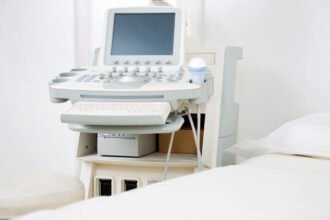Hospitals have a fundamental obligation: to create a safe environment for patients, with an emphasis on sterility in all procedure areas. Unfortunately, this aim is often in conflict with modern efforts to develop more sustainable practices because eco-friendly mainstays like reusable products or decreased energy use simply aren’t options. This raises the question of whether it’s even possible for hospitals to go green. Ultimately, practicing sustainable medicine is possible, but it does present significant logistical challenges.
Lead With Light
One of the easiest eco-friendly changes to make in any medical environment is one of light; your practice should eliminate fluorescent lights in favor of energy efficient LEDs. Additionally, be sure to let in as much natural light as possible. Sunlight is a proven mood booster, while fluorescent lights cause many patients to suffer headaches, making their stay less pleasant.
Your hospital can also supplement its energy use by embracing solar power as part of its infrastructure. Though obviously large medical centers require a lot of electricity, as well as generators in the case of an emergency, solar or even wind energy can help meet some of your hospital’s needs.
Split Up Waste
Medical supplies, from scalpels and needles to gloves, gauze, and gowns, are a leading source of medical waste, and to the untrained eye the excess can be ridiculous. For example, when a fully scrubbed surgeon opens some sponges in an empty operating room, those sponges are immediately considered contaminated and must be disposed of even though they’ve never been used. And that’s just the tip of the iceberg when considering hospital waste.
In order to minimize the environmental damage caused by disposing of medical supplies, hospitals should be sure to maintain segregated waste streams. Pharmaceutical waste needs to be divided from biological and pathology waste or from sharps in order to ensure that end processors dispose of them correctly. Spaces should be equipped with waste containers to ensure proper disposal and reduce injury; staff are more likely to sustain needle prick injuries and similar harms when there isn’t a disposal container immediately available.
Develop Recovery Protocols
Just like the hospital kitchen likely has recovery and recycling systems for cardboard, bottles, and even uneaten food, the rest of your institution needs recovery systems in order to function sustainably. Unfortunately, USA regulations regularly prevent hospitals from using items from recovery streams. By developing relationships with non-profits, however, your hospital’s waste can save lives around the world.
Across the United States, groups like Partners for World Health and Esperança are giving medical waste a second life. Partner hospitals hand off perfectly good supplies, such as “expired” IV lines or unused supplies from surgical packs and these goods are delivered to high-need areas. Many hospitals even include older durable equipment like beds and sonogram machines in their deliveries when they’re upgrading those items.
Cut Back On Travel
Travel is an expensive part of running a hospital, and it’s surprisingly frequent. Doctors attend conferences around the globe and patients travel long distances to appointments, burning fossil fuels all the way. By embracing telehealth, however, your hospital can significantly reduce patient travel for non-emergent care.
Telemedicine is a quickly growing sector and makes care much more affordable, yet it’s still greatly underutilized; only about 1-2% of eligible patients use telehealth services. When hospitals emphasize telehealth and actively encourage patients to take advantage of this option for consultations and supplemental care, all participants save money, time, and energy. Telehealth can also minimize disease transmission among vulnerable patients.
Mind Your Order Volume
Finally, hospitals can greatly reduce medical waste by maintaining better inventory practices. Many medical supplies are marked with an expiration date, even if they don’t technically expire the way a medication or food item might. Rather, they’re arbitrarily marked with a use-by date and hospitals have to dispose of those products after that date. By reducing order volume and minimizing overstock, hospitals can reduce the amount of supplies that go unused.
Modern inventory management systems can help hospitals reduce over-ordering tendencies by tracking supply use and order patterns and issuing restock alerts. These systems use past supply use patterns to predict inventory depletion in the upcoming days and weeks, a process that reduces both material and financial waste.
In 2012, the National Academy of Medicine estimated that the United States healthcare system wasted $765 billion. That’s more than the defense budget and enough to supply thousands of underserved hospitals around the globe. Make your hospital part of the solution rather than contributing to the problem and cut the fat. The fact is that American hospitals aren’t at risk of running out of scalpels or bandages; we’re immersed in a culture of waste. Healthcare costs enough without supply overruns and our patients – and the earth – depend on medicine making simple, sustainable changes in the next few years.









